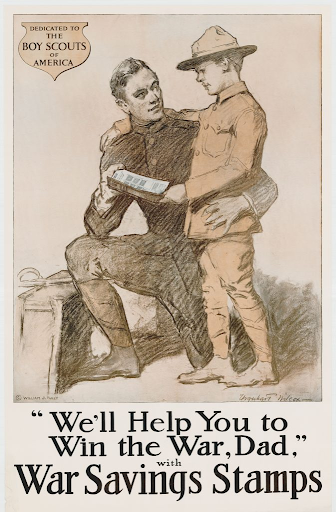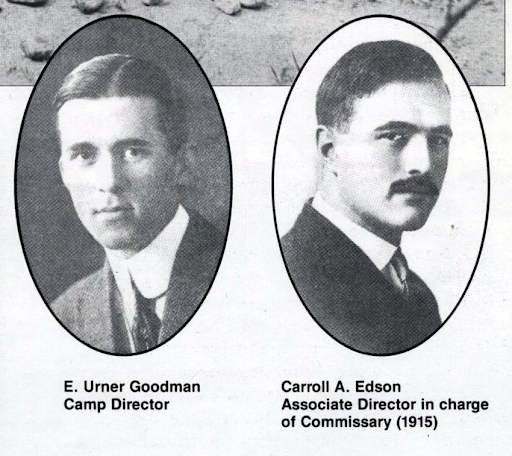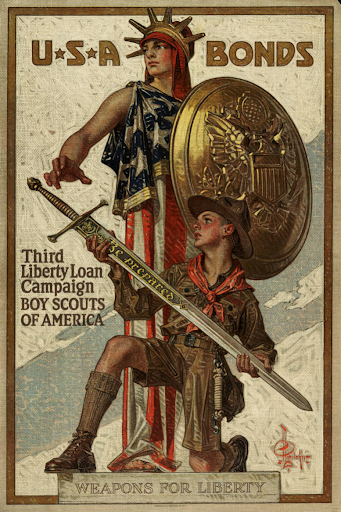
This April, the Order of the Arrow remembers significant milestones in our 108-year history. This month includes important events highlighting our founders’ roles in the Scouts BSA program and their successful creation of Scouting’s National Honor Society. For instance, did you know that in 1911, at only twenty years old, E. Urner Goodman was asked to become Scoutmaster for Troop One in Philadelphia? Or that his time in Scouting would continue for four more decades until 1951? This April, we honor the accomplishments of the Arrowmen that came before us. Their achievements and strength have created the foundation of our Order.

April 1, 1915: The Philadelphia Council hired E. Urner Goodman and Carroll A. Edson, and they became professional Scouters at 23 years old. They were then appointed Field Commissioners (now called Field Executives) by Philadelphia Scout Executive Walter S. Cowing. One month later, the Philadelphia Council Camp Committee appointed Goodman as Camp Director of Treasure Island, with Edson as his Assistant Camp Director.

April 6, 1917: The United States enters World War I. Goodman served as a second lieutenant in Atlanta, Georgia, while Edson was a first lieutenant in Long Island, New York. Neither founder was transferred overseas because of their talent for organizing and training young soldiers at home, seen in their exceptional Scouting service. After the war began, the BSA program sought ways to serve the homefront. Thus, Scouts sold war bonds and war-saving stamps. They also grew victory gardens, distributed over 300 million pieces of literature for the government, and collected peach pits for use in gas mask filters. This contribution to the war effort garnered support from millions of Americans and solidified Scouting’s importance in society.
April 1, 1931: Goodman’s tenure as Scout Executive in Chicago ended. Soon after, he became the first BSA Director of Program. As Program Director, Goodman worked with the three other director positions (business, operations, and personnel) that reported to the Chief Scout Executive. He was also responsible for the BSA’s Cub Scout and Explorer programs while overseeing the writing of the first Scout Field Guide. In 1951, Goodman retired after twenty years as Program Director and over thirty-five years as a professional Scouter. By then, the Order of the Arrow was active in two-thirds of all councils in the country.
April 23, 1935: Changes to the Order’s terminology, decided on January 1, 1935, were disseminated to local lodges. The BSA had previously expressed concerns about heavy reliance on Masonic fraternal terms used in the Order of the Arrow. Thus, the term “lodge,” which the Masons used to label their local groupings, was replaced with “tribe.” Moreover, the term “grand,” used by Masons to describe the highest governing body, was replaced with “national.” Likewise, the term “Degree” became “Honor,” and the term “password” became “admonition.” Fourteen months later, however, the organization would revert back to the term “lodge” instead of “tribe.” Conflicts arose with the Lone Scout program, for it too was utilizing the term “tribe” within its organization. Thomas Cairns, the national lodge chief in 1936, even said that “many of us seem happy to have again the use of the word ‘lodge.’”
April 5, 1937: Jonito-Otara (later known as Anpetu-We) Lodge, in Southern Illinois, became the 100th chartered lodge. Although it took 15 years for the first 50 lodges to form, the program doubled to 100 lodges in only seven more years. It would only take 16 more years for the Order of the Arrow to charter its 500th lodge, Ona Yote Kaonaga Lodge of Rome, New York. This exponential growth continued for years, and today there are over 160,000 active Arrowmen nationwide and over 270 BSA councils affiliated with local lodges.
April 23, 1954: Less than two years after being elected president, Dwight Eisenhower was made an “honorary member” of the Zit-Kala-Sha Lodge in Louisville, Kentucky. Eisenhower strongly supported Scouting since his son was active and even served on the Executive Board of the BSA. President Franklin D. Roosevelt was also an honorary member, inducted on August 23, 1933, at Camp Man of Ten Mile River Scout Camp in New York.
As Arrowmen can tell, April is a month rich in history for the Order of the Arrow. Even amid irksome tasks and weighty responsibilities, the founders upheld their goals and persevered in the face of adversity. Thanks to these early changes and achievements, the path to success was paved for the organization.
